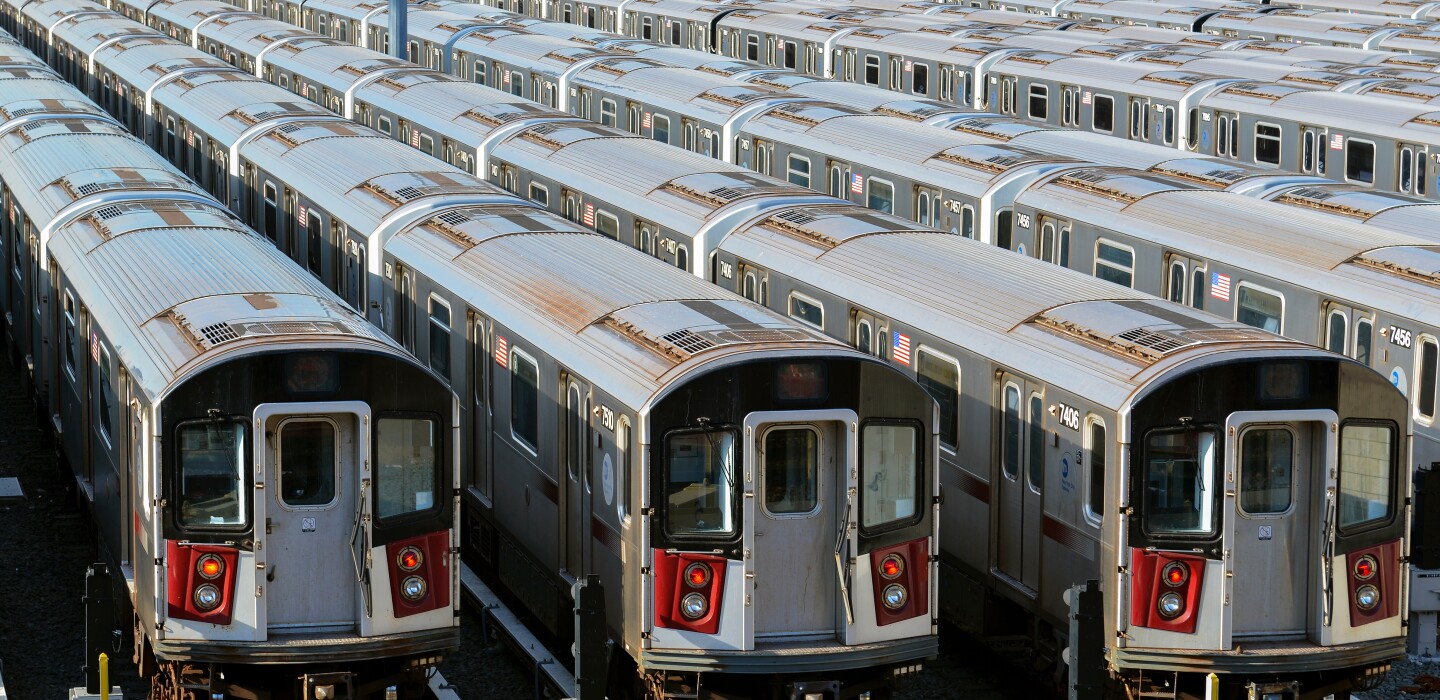
Most Pa. Train Derailments Happen Near Major Rivers
(TNS) – From East Palestine to Pittsburgh’s West End, numerous train derailments have elevated concerns over the dangers of rail accidents and rallied calls for increased railroad safety. A new study brings a new perspective to the issue in Western Pennsylvania, revealing where these incidents happen and what they threaten.
In a report published by the Pittsburgh Collaboratory for Water Research, Education and Outreach, University of Pittsburgh researchers discovered that most train derailments in the region occur near major rivers and communities designated as environmental justice areas.
The researchers gathered data from the Federal Railroad Administration and plotted all rail accidents in the region between 2011 and 2022.
Their results showed a troubling pattern — 211 of the 270 accidents occurred within 300 yards of a major river.
And 245 out of 270 occurred in, or within 1 mile of, environmental justice areas. Pennsylvania defines that as any census tract where 20% or more individuals live, at or below the federal poverty line and/or 30% or more of the population identifies as non-white. About a third of Pennsylvania’s population live in environmental justice areas.
That means communities already impacted by socio-economic and environmental inequities face disproportionate risk from derailments, according to Dan Bain, associate professor in Pitt’s geology and environmental science department.
“We have a low rate of occurrence but high consequence kind of situation,” he said.
While not all accidents are hazardous, 22% of all accidents in the region between 2011-2021 involved trains with some HAZMAT cargo, according to the analysis. Accidents involving cars carrying these materials tend to happen in more populated areas, including Allegheny and Beaver counties.
But it’s not just the accidents themselves that wreak havoc, the Pitt researchers say. The chemicals and tactics used to contain spills and manage disasters can also pose risks to aquatic life.
Mr. Bain also explained that emergency response teams must make quick decisions that may prioritize human life over aquatic health. Over time, those calls may lead to environmental impacts that affect both people and animals in the long run.
“A lot of these emergency responses are somewhat experimental because you’re doing the best you can with the information you have to protect the most people,” he said. “For example, you put something in to soak up petroleum, and once you put it in water, it can hurt some of the fish that are not being impacted by the petroleum. In an area like ours, where so many people use these waters for drinking water and fishing, you don’t necessarily make those longer term connections.”
The report’s insights come almost a year after a Norfolk Southern train carrying petroleum distillates derailed in Harmar Township. More than a dozen train cars derailed and nine crashed into the water near the Allegheny River, releasing chemicals just upstream of where the Pittsburgh Water and Sewer Authority pulls drinking water from the river.
Norfolk Southern estimated that 3,000 gallons of petroleum discharged into the creek that runs toward the Allegheny River. Petroleum distillates are solvents used in products such as mineral spirits and kerosene, according to the Centers for Disease Control and Prevention.
It also comes on the heels of a train derailment in East Palestine that grabbed national attention, unfolding just across the Pennsylvania border. The incident triggered multiple lawsuits, including three Western Pennsylvania school districts, and an investigation into Norfolk Southern’s safety practices.
Just last month, five empty Norfolk Southern train cars slipped off the tracks near Pittsburgh’s West End. Officials said there were no hazards or injuries, and the National Transportation Safety Board said it was not investigating the Pittsburgh derailment individually or as part of the ongoing investigation into Norfolk Southern.
“After East Palestine and as we approached the anniversary of the Harmar accident, we were starting to wonder, where are these accidents happening?” Mr. Bain said.
The study unveiled a concerning connection between derailments and southwestern Pennsylvania’s river valleys, but the results weren’t all that surprising to Mr. Bain.
Transportation in the region has historically centered around rivers, he said. Since many industrial facilities were built along waterways, railroads naturally followed the path of rivers.
“Before there were trains, there were boats and that’s where all the industrial facilities were,” he said. “When you started building trains, not only did the rivers offer a nice smooth path for going up and down the valley, we also had the industrial facilities you needed to link up.”
He calls this region a “superhighway” for trains and said railroad companies have looked for ways to ratchet up their operations. Last year, Norfolk Southern got the green light to elevate three Pittsburgh bridges to run double-stacked trains through the North Side.
“There’s definitely things that the railroads want to do to increase rail traffic volume through our region,” he said. “We have to live in this region. We’re not passing through, so we really need to demand as a region that they’re more scrupulous, and they don’t use these sort of administrative loopholes to get out of things that might cause a small dent in their bottom line.”
That’s why he and the researchers say prevention is key. The East Palestine derailment seemed to energize efforts on that front, as Pennsylvania officials have stressed the outsized role the federal government plays in regulating rail commerce.
Several lawmakers, including Sens. Bob Casey and John Fetterman, are moving to pass the bipartisan Railroad Safety Act, which requires trains to have crews of at least two people, expands the classification for highly hazardous flammable trains and increases fines for safety violations.
As a scientist, Mr. Bain said he hopes the study instills more urgency in creating a “safety culture” and preventing accidents from happening in the first place.
“If we can keep bringing that back to the forefront, the region is going to be better off,” he said.
©2023 the Pittsburgh Post-Gazette. Distributed by Tribune Content Agency, LLC.


Average Rating